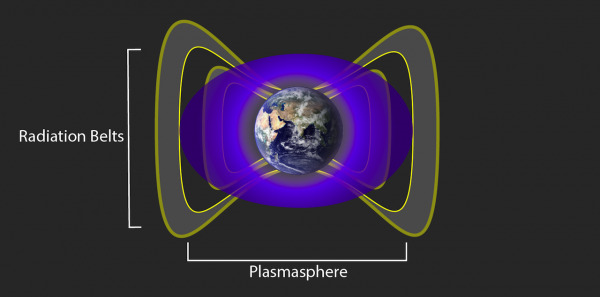We've Just Figured Out How Earth's Force-Field Works
A planet-scale force field sounds like the stuff of science fiction, but scientists using NASA probes have discovered that Earth is in fact protected by just such a phenomenon, with speedy electrons from a vast and naturally-occurring twin torus of radiation kept away from us. The Van Allen belts were first measured in 1958, each a gathering of charged particles kept in place by the planet's own magnetic field, and varying in size and strength according to the output of the sun. However, it's only now that their interaction with Earth's plasmasphere and how it acts as a forcefield has been understood.
The two belts – which can, rarely, split into a third – generally keep to their own positions around the planet. The tighter ring is commonly found around 400 to 6,000 miles above the surface, while its larger larger compatriot ranges from 8,400 to 36,000 miles.
That's been known for some time, but scientists have been unsure what gives the Van Allen belts their distinctive shape, and indeed what keeps them separated. More importantly, perhaps, they've not been certain about what keeps the fastest-moving radioactive particles from reaching the surface.

Turns out, new data from the Van Allen Probes shows, it's the plasmasphere that also runs around the Earth that's probably doing that. A cloud of charged, relatively cool particles, it spans a huge space from around 600 miles to partially into the outer Van Allen ring: it's also the interaction between them and the radioactive belts which keeps the stronger, more dangerous particles breaking through.
The most radioactive electrons in the Van Allen belts actually move the slowest toward Earth, scientists discovered, and so are easily rebuffed by the plasmasphere.
"The scattering due to the plasmapause is strong enough to create a wall at the inner edge of the outer Van Allen Belt," Dan Baker, space scientist at the University of Colorado in Boulder says of the findings.
Previously, it had been suggested that man-made transmissions could have acted as a barrier, or that the Earth's magnetic field itself was keeping the radioactive electrons at bay. "This is completely new. We certainly didn't expect that," Shrik Kanekal of the Van Allen Probes mission said of the new theory.
SOURCE NASA
